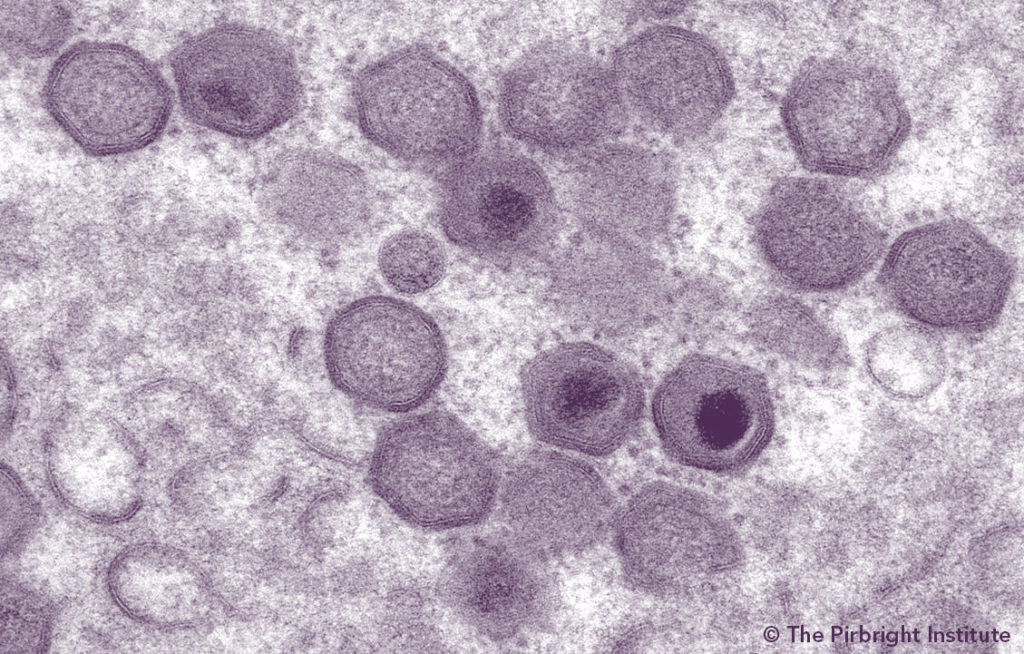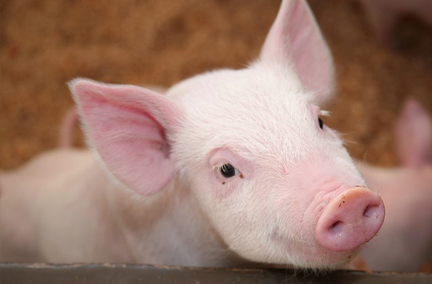
SHIC, launched by the National Pork Board in 2015 solely with Pork Checkoff funding, continues to focus efforts on prevention, preparedness, and response to novel and emerging swine disease for the benefit of US swine health. As a conduit of information and research, SHIC encourages sharing of its publications and research. Forward, reprint, and quote SHIC material freely. SHIC is funded by America’s pork producers to fulfill its mission to protect and enhance the health of the US swine herd. For more information, visit http://www.swinehealth.org or contact Dr. Sundberg at [email protected].

The Swine Health Information Center, along with the Foundation for Food and Agriculture Research and Pork Checkoff, joined together to fund and launch a two-year Wean-to-Harvest Biosecurity Research Program in the summer of 2022. In October 2022, a call for research proposals was announced with the goal of investigating cost-effective, innovative technologies, protocols, or ideas to enhance biosecurity during the wean-to-harvest phases of swine production. By the submission deadline of December 16, 2022, significant interest in the Program resulted in SHIC receiving 41 proposal submissions. Proposal selection is now underway.
The Wean-to-Harvest Biosecurity Program proposals received by SHIC, coming from private companies as well as universities in the US and around the world, cover a diverse set of research priorities with a range of time and cost requirements for completion, all with the goal of addressing an identified vulnerability to swine health. Proposals have undergone a competitive review process by two industry-wide task forces formed by SHIC – one for site-oriented projects and the other for transportation-related work.
Task force review goals were to be objective, credible, and transparent while evaluating each proposal’s overall value to the pork industry, likelihood of achieving objectives, experimental design including health and economic outcome effectiveness, and justification for cost and time. The SHIC Board of Directors, along with FFAR and National Pork Board representatives, reviewed the task forces’ recommendations and made the final decision on funding selections in late January 2023. The anticipated timeline for announcing and funding awards is February 2023. Projects will start soon after that and SHIC will report research results providing value and information back to the swine industry as soon as they become available.
A pool of approximately $2.3 million is available for Wean-to-Harvest Biosecurity Program research. Proposals were capped at $200,000, however, individual proposals could have been higher if there was sufficient justification for a project that would be unique, high impact, and have industry-wide benefits.
The Wean-to-Harvest Biosecurity Program not only reflects SHIC’s responsiveness to an identified health vulnerability but further illustrates collaboration, with FFAR and NPB in this instance, to stretch SHIC’s producer Checkoff funds to safeguard the health of the US swine herd. Proactively enhancing wean-to-harvest biosecurity will help control the next emerging disease in the US pork industry, part of SHIC’s mission.
SHIC, launched by the National Pork Board in 2015 solely with Pork Checkoff funding, continues to focus efforts on prevention, preparedness, and response to novel and emerging swine disease for the benefit of US swine health. As a conduit of information and research, SHIC encourages sharing of its publications and research. Forward, reprint, and quote SHIC material freely. SHIC is funded by America’s pork producers to fulfill its mission to protect and enhance the health of the US swine herd. For more information, visit http://www.swinehealth.org or contact Dr. Paul Sundberg at [email protected].

Emerging diseases sometimes come with familiar names coupled with increased risk and need for response. In the US, the PRRSV L1C variant of RFLP 1-4-4 has been a significant challenge in the Upper Midwest for two years and now PRRSV L1C 1-2-4 has become a concern. In Spain, a PRRSV strain with increased virulence known as Rosalia has affected production since 2020. SHIC, with AASV and Iowa State University’s Swine Medicine Education Center, will host a webinar on emerging PRRSV strains on Tuesday, February 21, 2023, at 11:00 am CT.
Webinar participants include Dr. Enric Mateu, Autonomous University of Barcelona (Spain), Drs. Daniel Linhares and Giovani Trevisan, ISU, Dr. Clayton Johnson, Carthage (Illinois) Veterinary Service, and Dr. Paul Yeske, Swine Vet Center (St. Peter, Minnesota). All have hands-on experience with emerging PRRSV strains and will share their perspectives on clinical presentation, production losses, detection and spread, regional differences, response strategies, and what they have found to be successful in control or elimination from herds in the US and potential lessons learned from Spain.
Registration for the PRRS Strains Webinar is now open.
As part of SHIC’s effort to inform the swine industry on emerging swine diseases and emerging swine health issues, the Center collaborates with AASV and SMEC to host webinars. Goals are to address current “industry chatter” and provide information for veterinary practitioners and producers on field experience, detection, and management/control strategies. Previous webinars can be found here.

The Swine Health Information Center received a $650,000 USDA National Institute of Food and Agriculture grant for research designed to reduce the risk of imported feed ingredients, specifically soybean products, from spreading African swine fever virus in the domestic swine herd. This four-year project will define the stability of ASFV in soybean products commonly imported into the US for complete feed diets as well as improve diagnostic capabilities and surveillance tools for the detection of ASFV in contaminated soybean products and complete feed.
SHIC works diligently to provide tools and resources to help prevent the introduction of ASFV into the US. This critical task includes biosecurity research on feed as a common input onto swine farms. Feed biosecurity is an important aspect of overall agricultural biosecurity as it is known that contaminated feed and ingredients can serve as a source for introduction and spread of transboundary diseases. Soybean products, widely used in complete pig feeds, are globally traded and serve as a potential risk if imported from ASFV endemic countries or regions.
USDA NIFA awarded the grant to SHIC where Associate Director Dr. Megan Niederwerder will serve as project director. This work will benefit pork producers, better equipping them to address foreign animal disease vectors. SHIC has awarded the US Department of Homeland Security Science and Technology Directorate a funded Cooperative Research and Development Agreement to complete the research objectives.
This project will include standard operating procedures for in vitro diagnostic assays, including quantitative PCR to detect ASFV genome and end-point virus titration to quantify infectious ASFV, as well as an in vivo swine bioassay. Resulting outputs include the rate of ASFV genome and titer decay as well as inactivation at different time by temperature points. Outcomes of this project will be presented at national and international conferences and will be published in peer-reviewed manuscripts. Project objectives will help define the relative risk of various soybean products that are used in swine diets. Adoption of feed risk mitigation strategies recommended based on the data generated in this project will help enhance the US border security against ASFV entering the country.
This work is supported by A1181 Agricultural Biosecurity grant no. 2022-67015-38576/project accession no. 1029316 from the USDA National Institute of Food and Agriculture. Any opinions, findings, conclusions, or recommendations expressed in this publication are those of the authors and do not necessarily reflect the view of the U.S. Department of Agriculture.
SHIC, launched by the National Pork Board in 2015 solely with Pork Checkoff funding, continues to focus efforts on prevention, preparedness, and response to novel and emerging swine disease for the benefit of US swine health. As a conduit of information and research, SHIC encourages sharing of its publications and research. Forward, reprint, and quote SHIC material freely. SHIC is funded by America’s pork producers to fulfill its mission to protect and enhance the health of the US swine herd. For more information, visit http://www.swinehealth.org or contact Dr. Paul Sundberg at [email protected].

The Swine Health Information Center’s 2023 Plan of Work was approved by the SHIC Board of Directors during their January 27, 2023, meeting. SHIC’s mission remains to protect and enhance the health of the United States swine herd; this annual review of projects and priorities directs actions for the upcoming year. The POW is divided into four sections addressing SHIC’s priorities – 1) Monitor and Mitigate Risks to Swine Health, 2) Respond to Emerging Disease, 3) Surveillance and Discovery of Emerging Disease, 4) Improve Swine Health Information – with significant activities planned in each category, including the Wean-to-Harvest Biosecurity Program added to the 2022 Plan of Work and extending into 2023. Following are some of the highlights of each section. Click here to access the complete 2023 Plan of Work.
1) Monitor and Mitigate Risks to Swine Health
SHIC, along with the Foundation for Food and Agriculture Research and Pork Checkoff, joined together to fund and launch a two-year Wean-to-Harvest Biosecurity Research Program in the late fall of 2022. Program goals are to investigate cost-effective, innovative technologies, protocols, or ideas to enhance biosecurity during the wean-to-harvest phases of swine production. Submitted research proposals have been reviewed by industry-wide task forces focused on transport and site biosecurity. The work will continue into 2023, with solicitation for targeted proposals and projects seeking creative, new ways to enhance biosecurity and demonstrate return on investment.
SHIC will investigate the ability of common production inputs to act as mechanical vectors for disease introduction onto farms in 2023, to supplement the work of the Wean-to-Harvest Biosecurity Research Program. Projects could include decreasing the potential for pathogen transmission via feed and investigation of common non-feed inputs as vectors, all designed to inform and strengthen farm biosecurity.
Enhancing the Global Swine Disease Monitoring Report to expand understanding of disease status in countries around the world remains a top priority for SHIC. The GDMR gathers information from official organizations, companies, and individuals with international experience to compile outbreaks and global disease data. During 2023, the objective will be to add country or regional information about production diseases through the formation of a global veterinary diagnostic laboratory network.
African swine fever will continue to be a monitoring priority in 2023, with the objective of protecting the US pork industry from its introduction. SHIC will continue to participate in industry-wide efforts on this topic with research to inform effective national prevention, response, and recovery programs.
2) Respond to Emerging Disease
There is no predicting when or where the next emerging disease will appear. Japanese encephalitis virus in Australia has caused both pork production losses and public health disease. Research priorities have been drafted to focus the research on what producers need to know for effective prevention, detection, response, and recovery, should the virus enter North America.
Refining and enhancing the Rapid Response Corps program will continue in 2023. To ensure Rapid Response Teams can respond to nonprogram emerging disease outbreaks quickly and effectively, more volunteer participants will be trained. In addition, a standardized outbreak investigation instrument has been drafted and a web-based data and information entry platform has been developed. This, along with availability of National Pork Board’s AgView program tool for tracing pig movements, require updates of Rapid Response Corps training materials and Team exercises.
3) Surveillance and Discovery of Emerging Disease
To enhance detection of emerging disease, SHIC needs to be prepared with funds in place that can be quickly mobilized to support filling the immediate research gaps following an introduction. This research will provide producers and their veterinarians with critical information that they will need to effectively and rapidly respond to any disease outbreak. Consequently, the SHIC Diagnostic Fee Assistance program will be reviewed and broadened for improved results.
4) Improve Swine Health Information
The Swine Disease Reporting System takes advantage of major veterinary diagnostic laboratories’ willingness to share information and the SHIC-supported infrastructure to enable it. Advisory member feedback is gathered with the goal of making the SDRS a more timely and actionable source of information. Effort to mine SDRS data for emerging disease signals will be implemented.
SHIC, with co-sponsor American Association of Swine Veterinarians, plans to offer four to six current topic webinars. The objective of these webinars, continuation of a program launched in 2020, is to keep pace with industry chatter about swine health challenges.
Beyond SHIC’s established means for communication of swine disease information to a variety of stakeholder audiences, renewed outreach to state animal health officials and state pork producer associations will expand delivery of key messages in 2023.
Input for the Plan of Work is always welcome as SHIC seeks to be quickly responsive to industry needs and issues. Reach out to SHIC Executive Director Dr. Paul Sundberg at [email protected] or Associate Director Dr. Megan Niederwerder at [email protected].

SHIC, along with the National Pork Board, National Pork Producers Council, and American Association of Swine Veterinarians, has been working with U.S. Customs and Border Protection on efforts to prevent entry of foreign animal disease vectors into the US through screening and awareness. CBP Office of Field Operations, Acting Executive Director Dina Amato shares that “as part of our enduring mission priorities, CBP is responsible for facilitating lawful trade and protecting revenue, which relies on enhancing public and private partnerships that are integral elements of the agriculture safeguarding continuum.” As part of the ongoing process, CBP has recently launched a Public Interdiction Reporting Dashboard.
SHIC applauds CBP’s efforts to make these records publicly available for stakeholders to see the work CBP is doing to keep ASF and other foreign animal diseases out of the country to protect domestic agriculture. Data on the dashboard includes the number of suspected swine products intercepted at the border each fiscal year since 2020 and is updated monthly. The dashboard is available here: https://www.cbp.gov/newsroom/stats/agriculture-enforcement-statistics.
On the dashboard, CBP states, “Millions of pounds of fresh fruits, vegetables, animal products, and other items enter the United States from other countries every year. Although these items appear to be harmless, there could be hidden threats in that baggage and in those truckloads, trainloads, and containers of fresh items that could seriously threaten U.S. agriculture, our natural resources, and our economy. CBP agriculture specialists and the CBP officers at U.S. ports of entry target, detect, intercept, and thereby prevent the entry of these potential threats before they have a chance to do any harm.”

This month’s Domestic Swine Disease Monitoring Report, marking five years of the program, brings information about the PRSSV Lineage 1C variant RFLP 1-4-4, predominantly detected in Missouri, Iowa, and Minnesota in January. RT-PCR detection of PEDV and Delta coronavirus increased in all age categories. However, there was a slight decrease in PEDV detection in the last weeks of January. Also, PEDV, PDCoV, and PCV2 had spikes in the number of confirmed tissue diagnosis cases during January 2023. Regarding Mycoplasma hyopneumoniae, 2022 had the lowest percentage of positive PCR detection from sow farms since 2011. In the podcast, the SDRS hosts talk with Dr. Jordan Gebhardt, assistant professor at Kansas State University, about the dissemination of swine pathogens through animal feed manufacturing facilities, feed mitigation and biosecurity strategies, and Swine Health Improvement Plan (US SHIP) initiatives on feed biosecurity.

This month, read about the first report of Aujesky’s disease (pseudorabies virus) in Brazil in 20 years. The disease was detected in a smallholder farm in Rio Grande do Sul, the third largest pig production state. An outbreak of Senecavirus A in the UK has been confirmed by DEFRA which said the five incidences of vesicular illness in pigs identified in England between June and September 2022 were caused by the pathogen. The first report of ASF in Greece since 2020 is reported with two dead wild boars discovered near the Bulgarian and North Macedonian borders. The region was already in Restriction Zone I, given the ongoing ASF situation in the neighboring countries.
Copyright 2025 | Swinehealth.org | Website by Heartland Marketing Group